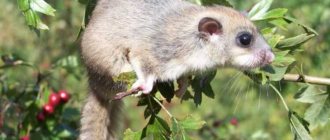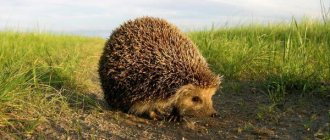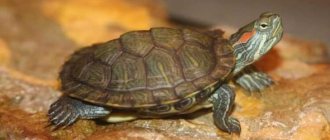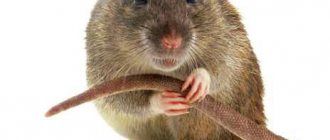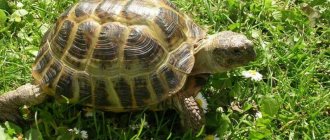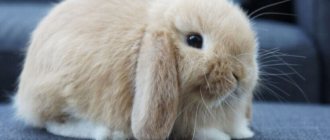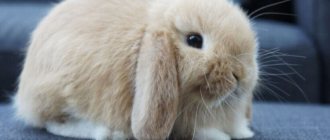Review author: “ZooVita”
At first glance, this mysterious animal from the order of rodents evokes tenderness and keen interest. These furry animals are so small that they fit completely into the palm of an adult. You can recognize a dormouse by its long and fluffy tail, as well as by its specific fur color.
Photos of forest dormouse can be found on the pages of reference books of fauna and wildlife representatives.
Description of the rodent
— Advertising —
Externally, dormice resemble mice or squirrels. Their body length is 8-20 cm. The tail is from 4 to 17 cm long, densely pubescent in most species, only in selevinia and mouse-like dormouse it is half naked. The ears are round in shape, without tufts. The paws are short, with well-developed sharp claws. The fur is thick and soft. The back is colored from gray to ocher-brown.
Preventive recommendations
There are several ways to avoid re-infection of your summer cottage with rodents:
- burn all garden waste immediately, keep your dacha area clean, get a cat or dog (they will scare off uninvited guests with their mere presence);
- for preventive purposes, place chemicals, for example, “Storm” tablets, throughout the cellar, storage areas, and the house itself;
- Many people use glue traps all year round, protecting their country house from the invasion of parasites.
The field mouse is a dangerous rodent that can destroy a lot of crops. If a pest is detected, immediately begin combating it, using useful recommendations from specialists.
More useful tips on how to deal with mice in the following video:
Sony's nutritional features
Dormice feed on both plant and animal foods. Seeds and fruits of trees and shrubs (acorns, linden nuts, beech nuts, apples) are consumed as plant foods. Among animal foods, they prefer insects; they eat eggs and small chicks less often. The composition of the diet for each species is closely related to the season and habitat.
Reasons for appearance
Why do voles appear in summer cottages? Rodents need food, constant availability of water and heat. All these qualities are possessed by warehouses and basements that are available in the country. Rodents are also able to feast on human supplies located in secluded corners of the kitchen. Paths for pests to pass include: ventilation ducts, open windows and doors, cracks in the floor and walls.
It is very easy to spot a pest in your summer cottage. The main signs of animal activity are the presence of minks and feces throughout the house, in secluded places. Pests also leave their marks everywhere. This is due to the fact that rodents’ teeth grow throughout their lives and need to be sharpened. What does a vole eat? It is common for mice to gnaw the bark of trees and the lower parts of bushes in the winter.
Common types of dormouse
There are many types of dormouse, but outwardly they look almost the same and differ, first of all, in the region of their habitat.
Angolan Dormouse (Graphiurus angolensis)
The species is endemic to Angola, where it lives in tropical and subtropical dry forests.
Sonya Christy (Graphiurus christyi)
Distributed in Cameroon and Congo. Lives in subtropical and tropical moist lowland forests.
Fat-tailed Dormouse (Graphiurus crassicaudatus)
The species' habitat includes Cameroon, Cote d'Ivoire, Ghana, Liberia, Nigeria and Togo, Guinea and Sierra Leone. Found in subtropical and tropical moist lowland forests.
Johnston's Dormouse (Graphiurus johnstoni)
It lives in the wet savannas of Malawi, Zambia and Zimbabwe.
Dormouse hueti (Graphiurus hueti)
The species is distributed in Cameroon, Ghana, Liberia, Nigeria, Sierra Leone and Gabon. Inhabits tropical and subtropical moist lowland forests.
Dormouse Kelleni (Graphiurus kelleni)
The distribution region includes tropical and subtropical dry forests, dry and wet savannas of Angola, Burkina Faso, Cameroon, Central African Republic, Congo, Gambia, Kenya, Mali, Nigeria, Niger, Senegal, Tanzania and Uganda.
West African dormouse (Graphiurus lorraineus)
Found in Cameroon, Congo, Ghana, Guinea-Bissau, Liberia, Nigeria, Sierra Leone, Tanzania, Uganda. The habitat is tropical and subtropical rainforests, savannas and plantations.
Short-eared Dormouse (Graphiurus microtis)
It lives in countries such as Angola, Botswana, Eritrea, Ethiopia, Kenya, Lesotho, Malawi, Mozambique, Namibia, South Africa, Sudan, Swaziland, Tanzania, Zambia and Zimbabwe.
Dormouse Monarda (Graphiurus monardi)
Distributed in Angola, Congo and Zambia, where it lives in humid savannas.
Savannah Dormouse (Graphiurus murinus)
The species is endemic to South Africa. It lives in subtropical or tropical rainforests, near rivers.
Spectacled or South African dormouse (Graphiurus ocularis)
The tail is fluffy, resembling a squirrel, with white hairs, the muzzle is short, the ears are small, the fur is soft. There are white and gray specks on the muzzle, and dark circles are visible around the eyes. The cheeks, belly and paws are white on top.
They live in western South Africa, in rocky areas.
Rock dormouse (Graphiurus rupicola)
Resident of Namibia, South Africa and Angola. Lives in rocky places.
Flat-headed dormouse (Graphiurus platyops)
It is found in countries such as Angola, Botswana, Mozambique, Swaziland, Zambia and Zimbabwe.
Guinea dormouse (Graphiurus surdus)
Distributed in tropical and subtropical moist lowland forests of Cameroon, Congo, Equatorial Guinea and Gabon.
Anatolian or downy dormouse (Dryomys laniger)
The species is endemic to Turkey.
Balochistan Dormouse (Dryomys niethammeri)
Found exclusively in Pakistan.
Forest dormouse (Dryomys nitedula)
Body length is up to 12 cm, tail is up to 10 cm long. Weight ranges from 30 to 40 g. The fur is grayish-ocher, changeable. For example, in the European part of Russia it becomes lighter from north to south. In Transcaucasia, the Apennines, the Alps and the Balkan Peninsula, forest dormouse are gray in color. The belly is grayish to white. The tail is fluffy, dark gray. A dark stripe runs from the nose to the ear.
The species is distributed in Europe, Transcaucasia and Asia in various types of forests.
Sichuan Dormouse (Chaetocauda sichuanensis)
Body length is about 9 cm, tail length is 9-10 cm. Weight is from 24.5 to 36.0 g.
The species was found in mixed forests in northern Sichuan, China. Since 2004, it has been included in the Red Book as a species in danger.
Black-tailed Dormouse (Eliomys melanurus)
Body length 10-18 cm, tail length 9-14 cm, weight 45-120 g. The back is brown, the belly is whitish. There is a dark “mask” over the eyes. The tail is fluffy, the tip is black.
The species is distributed from northeast Libya to the west of the Arabian Peninsula, and all the way to southern Turkey.
Garden Dormouse (Eliomys quercinus)
Body length is from 11 to 16 cm, tail length is from 9 to 14 cm, weight is 60-140 g. The muzzle is pointed. The ears are large, without tufts. The eyes are big. The fur is short, gray or brown on top, the belly is white, a black stripe runs from the eye and a little further than the ear, the tip of the fluffy tail is decorated with a white tassel.
Inhabits deciduous forests and gardens of Western Europe.
Maghreb Dormouse (Eliomys munbyanus)
It is found in Algeria, Libya, Morocco, Tunisia and Western Sahara, in humid forests and semi-deserts.
Kopetdag or mouse-like dormouse (Myomimus personatus)
Body length is about 8 cm. Tail is 5-6 cm long. The back is gray with a blurred dark stripe. The belly is white.
Lives in Turkmenistan and Iran.
Bulgarian dormouse (Myomimus roachi)
Distributed in Bulgaria, Greece and Turkey.
Iranian dormouse (Myomimus setzeri)
The species is endemic to Iran.
Selevinia (Selevinia betpakdalaensis)
Body length is about 10 cm, tail is up to 7.5 cm long, weight is about 30-35 g. The coat is thick and lush. The tail is densely covered with short hairs. The back is gray, the belly is whitish. The ears are large, the animal is able to roll them into a tube and unfold them like a fan.
A rare species, it is endemic to Kazakhstan, where it lives in deserts.
Japanese Dormouse (Glirulus japonicas)
Endemic to Japan. Distributed in temperate forests. Able to quickly run upside down and hang on branches.
Hazel Dormouse (Muscardinus avellanarius)
Body length is about 15 cm, weight is from 15 to 25 g. The tail is from 6 to 8 cm in length, with a tassel. The muzzle is blunt, the ears are small, round in shape, and the mustache is long. The back is ocher-red in color, rarely with a reddish tint, the belly is light with a fawn tint. The throat, chest and belly are light. Fingers are white. The tip of the tail is dark or light.
It is found in deciduous and mixed forests of Europe and northern Turkey.
Dormouse (Glis glis)
The largest of the dormouse, with a body length of 13 to 18 cm, weighing 150-180 g. It looks like a gray squirrel, but there are no tufts on its rounded ears. The tail is from 11 to 16 cm long, fluffy, gray above, whitish below. The fur is lush and fluffy, smoky gray or grayish-brown on the back and light gray, yellowish or white on the belly. The eye rings are dark and thin.
The habitat includes lowland and mountain forests of Europe, the Caucasus and Transcaucasia. It is found on the islands of the Mediterranean Sea: Sardinia, Corsica, Sicily, Crete and Corfu.
Dormouse behavior
Most dormice are forest animals and are nocturnal. They also live in the forest-steppe, in the mountains at an altitude of up to 3500 m above sea level, deserts, and savannas. Some dormouse (dormouse) spend almost all their time in trees, others (mouse dormouse) live on the ground. Dormouse shelters are built in hollows, nests, burrows, and under tree roots.
How to get rid of a mouse-vole
The fight against parasites consists of several points that must be combined to obtain the desired result:
- follow preventive measures that force mice to leave the territory of their summer cottage due to poor living conditions;
- use physical methods to control parasites.
Humanity has come up with many methods to combat voles, all of them can be divided into several main categories:
- time-tested folk remedies for mice;
- physical methods that involve the use of mechanical devices: traps, traps, mousetraps. This category includes the natural enemy of mice - the cat, ultrasonic repellers;
- chemicals: various aerosols, poisons, poisonous baits. Insecticides show excellent results, but are often dangerous for humans or animals living on the territory of the dacha.
When selecting the desired method against voles, take into account the characteristics of the room in which there are pests and the presence of animals.
Folk remedies and recipes
Mice have coexisted with humans for many centuries. During this period, people found out what rodents don’t like and learned to use these drugs against them. Before you start fighting parasites with chemicals, try using natural remedies that have been tested for more than one generation.
Folk recipes against voles:
- combine wheat flour, lime in equal parts, add a few pinches of salt. Place the bait in small quantities in saucers, place water nearby. After the parasite eats the “treat,” a blood clot forms in the stomach and the rodent dies. You can replace lime with gypsum, the result will be the same;
- In summer, make sure to stock up on anti-mouse herbs. They need to be placed in boxes with clothes and placed in cellars. Such herbs include: mint, wormwood, elderberry, tansy, wild rosemary. Also suitable are the roots and seeds of blackroot from mice, which is easy to find in your garden. All herbs are used in dried form, except for elderberry (use it fresh, do not put it next to food). Bundles of repellent plants are placed around the entire perimeter of the house and tied around trees;
- If you didn’t have any herbs prepared in the summer, then buy peppermint essential oil. Generously dampen a small piece of cloth with ether. Place a natural repeller in the mink, and for several days there will be no trace of mice left. In a similar way, you can use tansy, citrus, and coniferous oils.
Physical methods of destruction
Many people prefer to use proven mechanical methods, but keep in mind that you will have to regularly remove the carcasses of dead individuals. If the number of rodents is very large, then the bait may not work (the mouse may eat the bait and dodge the mousetrap). Many people prefer to have a cat, but “fluffies” live in the country with their owners only until winter. Not every cat is able to instill fear in mice; most pets themselves are afraid of rodents or simply do not want to hunt them.
Homemade traps show excellent results:
- glue mousetrap. You can use regular glue, but it is better to use a special product that emits a pleasant smell for mice and has toxic properties. Apply glue to a small cardboard, place such traps around the entire perimeter of the summer cottage, paying special attention to the cellar. To enhance effectiveness, place bait in the center of the cardboard (it is better to use bread soaked in vegetable oil, not cheese). Remove the caught mouse along with the trap, do not kill it in the house;
- mousetrap from a jar. Place bait at the bottom of a half-liter jar and grease the inside walls with butter. Place cardboard next to the jar so that the parasite can climb into the trap; he will no longer be able to get out (the edges are greased with oil). Change the bait regularly and remove mice, otherwise other parasites will not fall into the homemade trap.
Learn how to remove mold from clothes and prevent mold from reappearing on your items.
Effective means of controlling the Colorado potato beetle on the site and the rules for their use are described in this article.
Go to https://parazitam-stop.com/poleznoe/chelovek/kak-izbavitsya-ot-vshej.html and read about what lice look like on humans and how to deal with parasites.
Chemicals
Many summer residents prefer to use ready-made poisons and poisons for mice, which will certainly rid the room and protect food supplies from parasites.
Effective drugs:
- wax tablets "Storm". Place the product in boxes, holes, and drainage pipes. The tablets have a repellent effect; if a pest tastes the product, it will die within two weeks;
- universal “Granules”. They are made from natural wheat grains. The product has a cumulative effect (an infected mouse carries the poison on its paws and fur, affecting its relatives);
- glue "Musquidan". Effectively copes with voles not only in the summer cottage, but also indoors. It is recommended to apply it to cardboard and place the bait in the middle. When it gets on the glue, the mouse becomes tightly glued and quickly dies.
You can get rid of voles by populating your summer cottage with natural enemies: owls (one individual eats up to two thousand mice a year), martens, and foxes that feed exclusively on mice and voles. Weasels are capable of penetrating rodent burrows and destroying their offspring.
Reproduction of dormouse
Dormouses place their round nests made of foliage and grass in the crown of trees at a height of about 3 m above the ground. They are actively protected by females. Females give birth to one or two litters per year. The duration of pregnancy is 22-28 days. One litter contains from 2 to 9 babies. They become independent after a month.
The lifespan of a dormouse in nature is from 2 to 5.5 years.
Interesting facts about the rodent:
- Closer to autumn, dormice eat away and go into hibernation for the winter, which lasts up to six months. It was this habit that gave rise to the name of the species.
- If a person or a predator catches a dormouse and accidentally grabs the animal by the tail, the skin on it tears and peels off like a stocking, and the dormouse flees. Then the exposed tip of the tail dries out and the dead part falls off. Over time, the end of the tail expands and becomes overgrown with hair.
- Sometimes dormice cause damage to garden crops.
- The skins of large dormouse species are harvested as secondary fur.
Diversity of the mouse family
Types of mice Animals are best adapted to any living conditions. Agile, agile in their movements, rodents can run quickly, jump, climb, penetrate through the narrowest holes, and if there is an obstacle in front of them, then sharp teeth are used. A description of a mouse would not be complete without mentioning that they are quite smart and cautious, but at the same time shameless, cunning and brave. Possessing an excellent sense of smell and hearing, they are able to quickly respond to danger.
